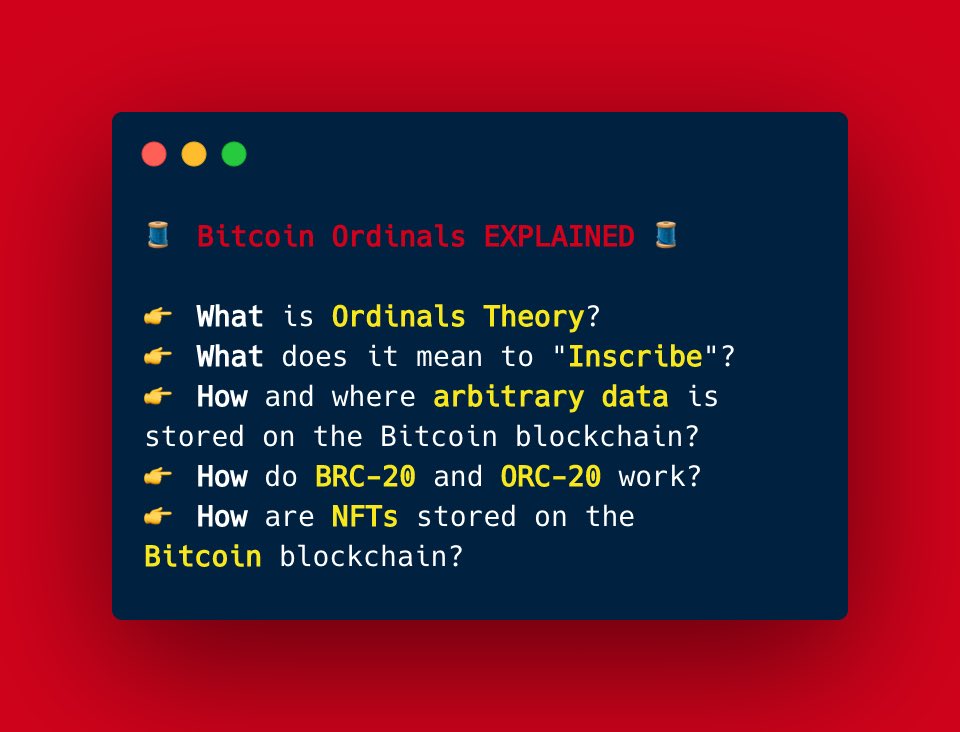
What if I told you that Bitcoin is not just about money, but it can also store arbitrary data?
🧠 Ordinal Theory assigns serial numbers to satoshis, the smallest unit of Bitcoin. These ordinal numbers are assigned in the order satoshis are mined, giving each a unique identity and opening the door to a world of possibilities
📝 An inscription is an arbitrary piece of data attached to an individual satoshi, transforming it into a Bitcoin-native digital artifact. It's like a digital signature, representing something unique and valuable
🔍 We can track a single satoshi using these inscriptions. This allows us to trace its journey across transactions, from one taproot address to another. The first satoshi of the first output becomes the vessel for the inscription
🌱 Taproot addresses play a crucial role in enabling inscriptions. They leverage the power of the Taproot upgrade on the Bitcoin blockchain, providing the necessary flexibility to store arbitrary content within a transaction
🗂️ So, how does arbitrary data get stored on the Bitcoin blockchain using ordinals? Inscription content is serialized and included in the input of a reveal transaction, giving life to new forms of digital artifacts
🔒 When an address becomes the owner of an inscription on the Bitcoin blockchain, it gains the ability to transfer that inscription. This ownership is secured and verified by the Bitcoin network itself
🛠️ Meet the ord tool! It serves as an index, block explorer, and wallet for exploring the world of inscriptions. With ord, you can generate, manage, and interact with your own inscriptions on the Bitcoin blockchain
🖼️ Inscriptions demonstrate the versatility of the Bitcoin blockchain, enabling storage of arbitrary data. From artwork to text, the possibilities are endless. Ordinal Theory opens new avenues for creativity and innovation on the blockchain.
🎯 Keep in mind that transaction fees and the size of the inscription can affect costs. As the inscription size increases, so does the transaction size, potentially impacting fees required for inclusion in a block
